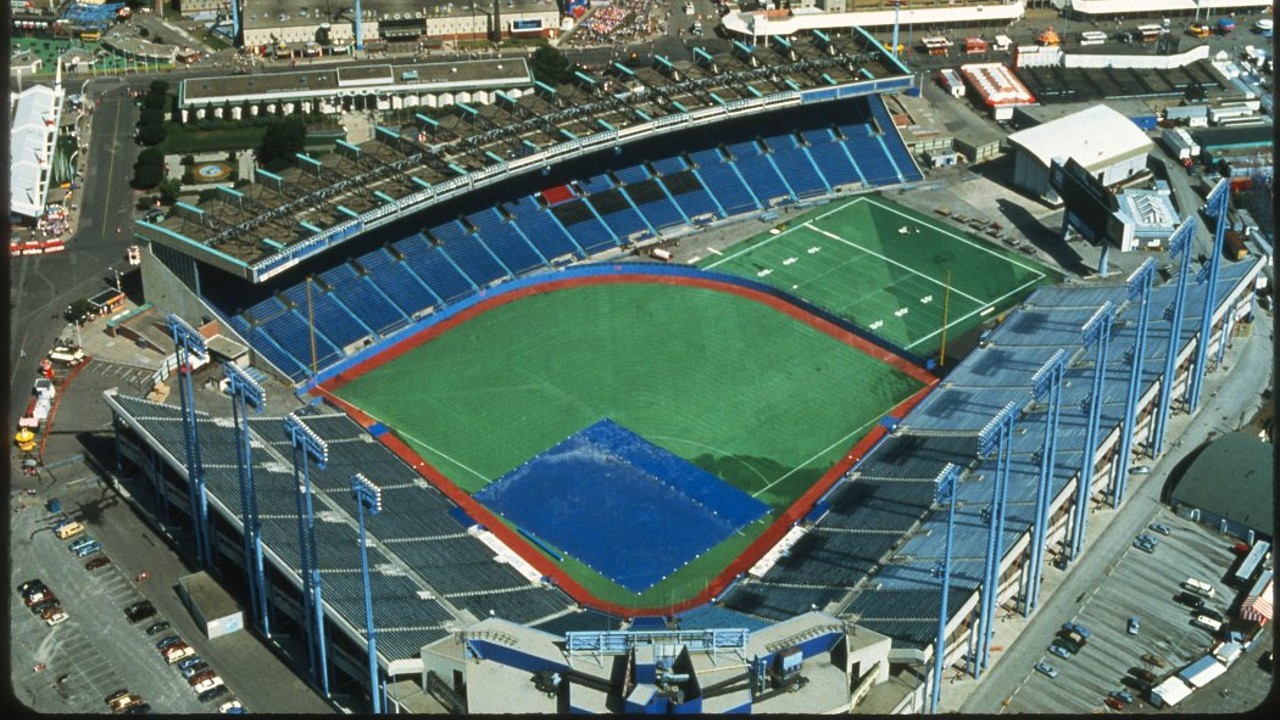Remembering the Blue Jays’ first home game … in the snow
On April 7, 1977, the Toronto Blue Jays made a ridiculously Canadian MLB debut.

In the first 18 months of the COVID-19 pandemic, the Toronto Blue Jays played regular-season “home games” in Dunedin, Fla., and Buffalo, N.Y., before moving back to Rogers Centre, the team’s true home field since 1989.
But Rogers Centre wasn’t their first stomping grounds — not by a long shot. When the Jays played their inaugural home game in April 1977, they did it at Exhibition Stadium. Another fun fact? They did it in the snow.
“Wait, what?” you may be asking. “Exhibition Place has a baseball stadium?”
Well, no — not anymore. It was demolished years ago, and now BMO Field sits on its former grounds. And even back when Exhibition Stadium still stood, it was hardly a shining example of the form.
“It wasn’t just the worst stadium in baseball,” long-time Blue Jays exec Paul Beeston told the Globe and Mail in 2015, “it was the worst stadium in sports.”
”The mistake by the lake”
When the Blue Jays moved in in 1977, having just been granted expansion-team status by MLB a year earlier, Exhibition Stadium was already home to the CFL’s Toronto Argonauts. Which goes a long way to explaining the strange seating configuration:

Here are a few fun facts about the stadium affectionately dubbed “the mistake by the lake”:
- Despite its odd outward appearance, the stadium’s outfield fences were pretty standard: 330 ft. to the corners, and 400 ft. to dead centre.
- In its first year of hosting baseball games, the building seated 38,522 spectators — and most of the seats were benches. But it could go well over that by opening up seats in the covered outfield grandstand.
- The grandstand was an existing concert venue that had been around since 1948 — which meant it wasn’t built to hug the dimensions of a baseball stadium. It started in left and extended on a subtle curve out past centre field, so deep centre-field seats were angled more toward right field than home plate.
- And unlike their current confines, which come complete with a retractable roof, Exhibition Stadium was fully open air. Which made April home games — in Canada, mind you — dicey.
In fact, it took all of one game for that last fun fact to become apparent.
(Snow) Day 1
The Blue Jays’ first game was played versus the visiting Chicago White Sox on April 7, 1977, at 1:48 p.m. According to historical weather data, it was about -1ºC (-7ºC with the wind chill) and snowing at the time of the first pitch.
The field itself was covered in AstroTurf, so it didn’t drain properly. The team had to use an ice-resurfacing machine to clean it off in order to play the game.
But they did, and an over-capacity crowd came to watch. As Beeston put it in a 2017 article from Sportsnet’s David Singh, “We gave ‘em a picture.”
The result of the game was perhaps less important than the work it took to get them there, but it was a good one all the same. After Chicago scored two in the top half of the first, Toronto won 9–3 the rest of the way.
Second-year first baseman Doug Ault went 3-for-4 with two home runs — the first and second of his MLB career. You can see both dingers in the video below:
So long, Exhibition
The Blue Jays played 967 more games at Exhibition Stadium before moving into Rogers Centre (then known as the Skydome) in June 1989. With the Argonauts leaving at the same time, the stadium lasted 10 more years — largely as a concert venue.
It was finally torn down in 1999.
That wasn’t the end of sports at Exhbition Place, of course. BMO Field was built on the spot in 2007 to become the home of Toronto FC, and the Argos eventually moved back in 2016. But, perhaps mercifully, no one has ever tried to convert BMO into a baseball diamond.
Few will remember Exhibition Stadium as an optimal spot to watch a ballgame. That said, it more than earned its place in Toronto sports history.
“It was the worst stadium in sports,” Beeston said in that 2005 Globe interview before adding, “but it was ours, and we were quite proud of it.”
This is an updated version of an article originally published in 2022.
Code and markup by Bridget Walsh and Kyle Duncan. ©Torontoverse, 2023